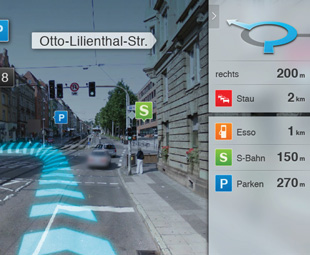Innovation in transit

The transport industry (be it in the air, on water or across land) certainly isn’t for the fainthearted – but it takes more than guts to make it in this sector … JACO DE KLERK takes a look at some innovative operators and features their pioneering practices.
The Oxford Dictionary defines “innovation” as “introducing or using new ideas, or ways of doing something” … which the logistics provider DHL has taken to heart. Proof of this is Frost & Sullivan’s presentation of its 2013 Sub-Saharan African Market Penetration Leadership Award to DHL Express Africa – as reported in our newsletter at the beginning of the year. (Here’s a short recap for those who missed it, before we get to some more juicy logistical innovations).
“When researching the logistics and express sector, it was obvious that DHL was making major progress in Africa through its aggressive expansion programme,” says Cornelis van der Waal, Frost & Sullivan’s business unit leader for Energy and Environment.
The main driver behind DHL’s growth has been its venture into the informal retail market. Instead of establishing more of its own stores at steep costs, the company decided to mimic the strategy of successful telecommunications companies and approach informal outlets that sell airtime, clothing or anything that is relevant to the market.
Starting with one store in Nairobi, it signed up over 1 800 partners across Africa; branding them as DHL outlets, training their staff and promoting them to the communities they serve. This led to an increased company footprint, local economic development and improved connectivity (through the services the organisation provides).
The innovation didn’t stop there, however, as DHL slapped its metaphorical thinking cap on in other areas of its business as well – using new ways to expand and adapt …
“For example, in 12 countries DHL Express has motorbikes in its fleet for better navigation through traffic and potholed roads, to improve delivery times,” explains Van der Waal.
“Similarly, the company uses boat transport in countries such as the Democratic Republic of Congo, Nigeria and Tanzania to facilitate the speedy movement of shipments. It also uses walking couriers in cities such as Cape Town, due to heavy traffic and to reduce its carbon footprint.” He adds that DHL is the only logistics provider to operate its own dedicated air fleet in Africa.
This logistics operator isn’t moving and shaking only on the African continent, however, as it aims to improve supply chains the world over … DHL has issued a new study on Augmented Reality (AR) in Logistics (bearing the same title – developed by DHL Customer Solutions & Innovation’s Trend Research team), focusing on possible applications of this emerging trend in the different stages of the supply chain.
“AR is defined as the expansion of physical reality by adding layers of computer-generated information to the real environment,” notes the trend report. “Information in this context could be any kind of virtual object or content; including text, graphics, video, sound, haptic feedback and GPS data. It is more than a simple display technology, however, as it also represents a new type of real-time, natural user interface for human interaction with objects and digital devices.”
AR in Logistics also illustrates how operations in warehouses, during transportation and last-mile delivery could be enhanced by these computer-generated, sensory inputs.
 Markus Kückelhaus, director of Trend Research, DHL Customer Solutions & Innovation, explains: “Recent headlines, such as heads-up displays on windshields or use of AR for vehicle repairs from the automotive sector, show how rapidly this technology is developing and finding its way into industries outside of the IT sector.”
Markus Kückelhaus, director of Trend Research, DHL Customer Solutions & Innovation, explains: “Recent headlines, such as heads-up displays on windshields or use of AR for vehicle repairs from the automotive sector, show how rapidly this technology is developing and finding its way into industries outside of the IT sector.”
He continues: “We believe that the technology also offers high potential for the logistics industry, and are currently selecting use cases for further research.”
The trend report presents 11 different possible applications for the logistics industry, for example, improved picking in warehouses by equipping staff with head-mounted displays. This would enable them to find the right route and the right item more efficiently.
AR in Logistics also sketches how transportation could be perfected … Just imagine delivery vehicles with augmented windshields that can display real-time traffic data and other valuable information, such as cargo temperature and alerts, thereby minimising driver distraction.
Drivers and staff at the parcel hub could be equipped with wearable devices to gain critical information on each parcel, including contents, weight and destination. This would improve loading processes and reduce handling damages.
“With the vehicle door shut and the correct parcel in the driver’s hands, often the next challenge is to find a specific building,” states the report. “This is particularly true when doing a first-time delivery, as there can be many complicating factors; such as obscured or missing house numbers or street names, entrances hidden in backyards or, as is the case in many developing countries, no structured naming scheme for streets and buildings.”
AR could address this as the driver could point an AR device at a building and it could display information such as Google Street View or relevant details from other databases. “When there’s no available public database, particularly with information on the position of entrances or other local features, the AR device could also be used to place markers, thereby building up an independent database over time,” notes AR in Logistics.
Another benefit of AR could be the improvement of maintenance and repair services offered by logistics providers, if workers are equipped with smart glasses that blend in step-by-step instructions.
“More and more logistics providers offer added value to customers with services such as assembly and repair,” the report relays. “For example, DHL not only collects materials from component providers for Audi, but also assembles these components into interior door panels that are then delivered to the Audi production plant in Germany.”
It adds that, currently, skilled workers are required for such tasks and each must be individually trained. “However, in future, AR could train and aid warehouse staff to assemble a variety of products and ensure that high standards of service are maintained, potentially reducing cost for customers.”
DHL states that it is open to collaboration with partners to further research AR applications in everyday operation. It is planning to test some of the derived use cases in proof-of-concept studies.
In order to make the technology more tangible for customers, the company is currently developing an interactive augmented reality exhibit at the Deutsche Post DHL Innovation Centre in Troisdorf, Germany.
Innovation doesn’t, however, have to be some new concept or thing – it can sprout from new ways of doing something as well … Imperial Health Sciences (part of the Imperial Logistics group) has partnered with Yusen Logistics (a global ocean freight specialist) to launch the pharmaceutical industry’s first dedicated, temperature-controlled sea freight consolidation service to southern Africa.
According to Iain Barton, managing director of Imperial Health Sciences, this service will increase the cost effectiveness of sea-freight solutions against air freight for pharmaceutical customers. “The innovative solution has been developed in response to demand from pharmaceutical customers for a robust, total supply chain service,” he adds.
Barton continues: “With a door-to-door pallet rate structure for consignments, which can range from a single pallet to a dedicated container, the new service maximises quality and minimises risk, with a complete audit trail for temperature control and security.”
Collections will be made throughout Europe by the Yusen Logistics’ network, and received into the company’s European pharmaceutical hub in Antwerp, Belgium. “Weekly sea freight will depart from the Port of Antwerp direct to Cape Town, where the product will be pre-cleared and offloaded into Imperial Health Sciences’ warehouse,” Barton outlines.
Onward transportation, by temperature-controlled vehicles, will then take the pharmaceutical goods directly to the consignee, to the manufacturer’s warehouse or to Imperial’s pharmaceutical distribution facilities around South Africa.
“All in all, this represents the pharmaceutical industry’s first comprehensive sea-freight solution from Europe to southern Africa, offering quality and cost benefits for both large and small shipments,” Barton reiterates. Solutions for East and West Africa will reportedly follow later in 2014 – keeping the innovation coming.
Bill Gates said it best: “Never before in history has innovation offered the promise of so much, to so many, in so short a time.” Be it the creative expansion of operators in new markets, alternative ways of getting goods to where they need to go, or a whole new take on reality, and filling the gap with a service that customers were yearning for …
Published by
Focus on Transport
focusmagsa




